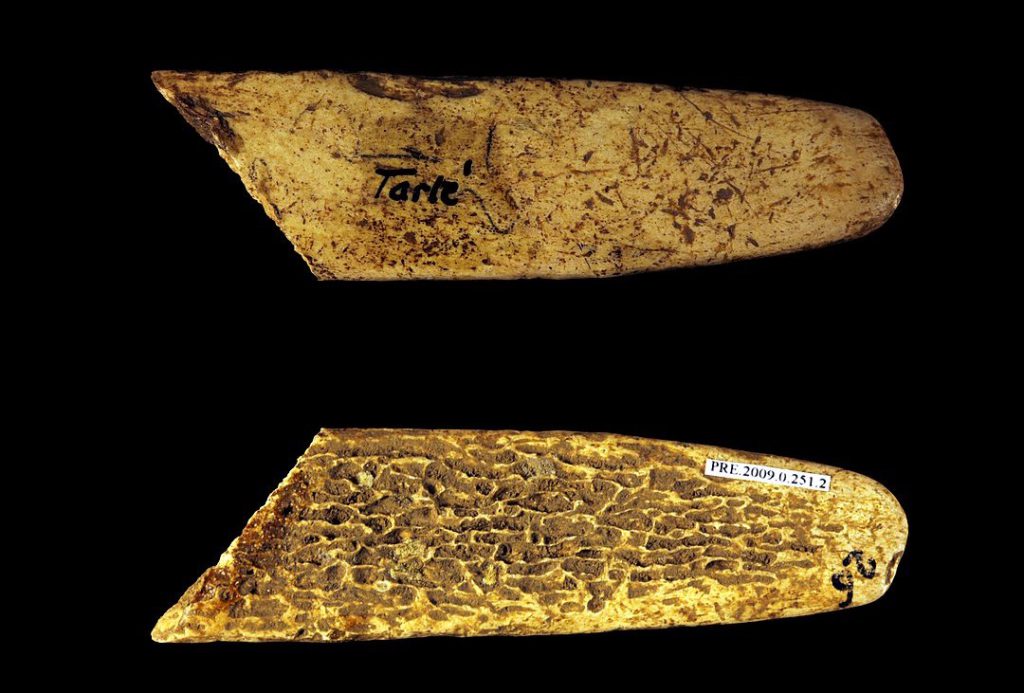A Spark of Insight Into Neanderthal Behavior
In 2017, Naomi Martisius, now a postdoctoral researcher with the Max Planck Institute for Evolutionary Anthropology in Leipzig, was sitting in a conference session when she had an “aha” moment: A simple plastic bag might be the key to her research conundrum.
Martisius was studying a handful of small bone artifacts thought to be lissoirs, or bone tools used in working animal hides, that had come from two archaeological sites in southwest France. These particular bone tools, usually made from animal ribs, were incredibly important because they had come from spots where Neanderthals had lived. Previously, researchers had primarily found bone tools associated with Homo sapiens archaeological remains, and so it was thought by some that bone tools were the sole province of modern human’s ingenuity.
So, the tiny tool fragments that Martisius was studying rewrote the story for Neanderthal tool use in 2013. That was already established. Now Martisius wanted to find out more about how the tools had been made and from what material. But they were too small to study in the traditional way.
Archaeologists can use ZooMS, or Zooarchaeology by Mass Spectrometry (a term coined by researcher Michael Buckley in 2009), to identify the animals to which archaeological bones once belonged. In general, the protein from the collagen in a bone sample is broken down into smaller chunks and analyzed to produce a chemical fingerprint. Researchers can then compare that fingerprint to a database of known substances to find a match. Typically, researchers need a piece of material the size of a breadcrumb. That may seem tiny, but museum curators often consider it too much to chip off a valuable cultural item in their collection.
In the conference session, Martisius listened to a research team from the University of York outline a new, nondestructive use for ZooMS: simply sampling a plastic box or bag in which a bone object had been kept.
When a bone item is stored in a plastic box or bag, a static charge gradually builds up between the bone and the plastic. In the same way that a statically charged balloon will attract the hair on your head, the charged plastic attracts tiny collagen molecules away from the bone.
For Martisius’ tiny lissoir fragments, the nondestructive plastic bag method seemed perfect. You get fewer molecules to analyze, says Frido Welker, who performed the ZooMS analysis for Martisius, but at least it provides the possibility of identifying a species without having to take a sample. “For bone artifacts, we should probably always try this approach first,” he says.
The results that Martisius got (recently published in Nature’s Scientific Reports journal) were intriguing. In the archaeological layers where the bone tool pieces had been found, the majority of the animal bones were identified as belonging to reindeer. However, ZooMS identified every one of the lissoir pieces as coming from bison or aurochs (a large, extinct species of cattle). To Martisius, this indicates that Neanderthals hunted plentiful reindeer for food but stuck with the larger animals when it came to choosing raw materials for tools.
There’s good reason to do that. The ribs of bison and aurochs are larger and stronger than reindeer ribs. A task like hide-smoothing involves pressing down repeatedly with a great deal of force. Larger ribs would be able to withstand a good deal more of this repetitive pressure, and so they would be a more effective material for a lissoir. Apparently, the Neanderthals at this site knew that too.
“We have to think about the way Neanderthals saw their prey, and it was more than just as a package of meat,” Martisius told me. “They would have considered parts like the hides, the marrow, and the bones as resources, even selecting certain bones for different purposes.”
“This research really shows that Neanderthals used a lot of forethought and planning in their daily lives,” she adds.
The technological wizardry of ZooMS, alongside many other pieces of evidence, demonstrates that our ancient relatives were far more similar to us than we previously thought. And now even simple plastic bags and boxes can help untangle that tale.


































